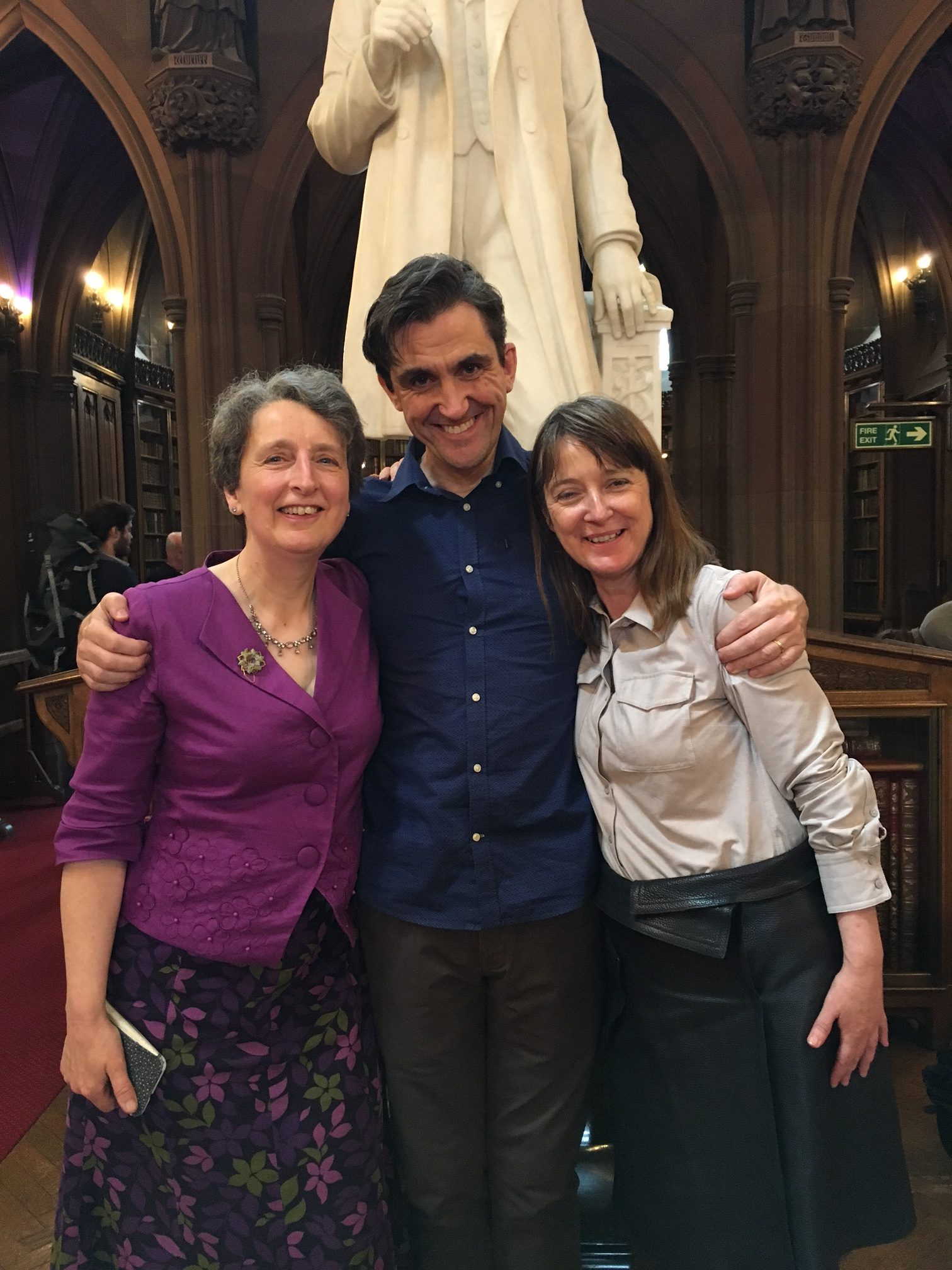The following new publications will soon be available for review:
— The Myth of the Perfect Pregnancy: A History of Miscarriage in America by Lara Freidenfelds (Oxford University Press, 2020)
— Midwifery from the Tudors to the Twenty-First Century: History, Politics and Safe Practice in England, by Julia Allison (Routledge, 2020)
NB the latter is in PDF format only; publishers are no longer posting out review copies owing to the coronavirus pandemic.
Please contact the Book Review Editor, Dr Alison Nuttall (alison_m_nuttall@hotmail.com) if you are interested in reviewing either of these titles.
Author Archives: Janette Allotey
History of childbirth event at the Foundling Museum – POSTPONED
We are very sorry indeed, but in view of the very sensible concerns of a number of delegates and the rapidly evolving public health warnings about the coronavirus, we have this morning taken the decision to postpone our study day at the Foundling Museum in London scheduled for Saturday March 14th. We’re aware that our delegates include quite a number of people who have care responsibilities for the more vulnerable, and we wish to avoid exposing them to any additional risk at this time. We hope you will understand this decision – which we’ve taken with much regret – in these exceptional circumstances. We are currently firming up with the Foundling Museum an alternative Saturday date – on this same theme and in a similar format (with their summer exhibition to visit) – a little later in 2020, hoping the coronavirus outbreak will then be safely behind us.
Valerie and Janette
Valerie Worth (Mellon-TORCH KE Fellow, Oxford University)
Janette Allotey (Chair of de Partu)
Book review needed
Hearn, Karen (2020) Portraying Pregnancy: from Holbein to Social Media
We are seeking from among our membership a reviewer for this book, which is being published in conjunction with an exhibition of the same name at the Foundling Museum in London. The review will be published on the websites both of De Partu and of the British Society for the History of Medicine. Please email Alison Nuttall if you are interested: alison_m_nuttall@hotmail.com.
Hearn, Karen (2020). Portraying Pregnancy: from Holbein to Social Media
London: Paul Holberton Publishing
Paperback, 242 x 168 mm
144 pages, 60 illustrations
ISBN: 978-1-911300-80-9
Royal College of Midwives – Special collections

‘This collection comprises primarily personal papers originally deposited at the Royal College of Midwives, now held at the RCOG. It includes case registers, pupil case books, notebooks, diaries, photographs and printed material, relating to the experiences of midwives and how childbirth has changed throughout the nineteenth and twentieth centuries.’
A very useful table of contents is available via the JISC Archives Hub.
A collection of useful links is available in the members area of our website including links to archives, libraries and museums and items related to historiography…
De-medicalisation of breast feeding …
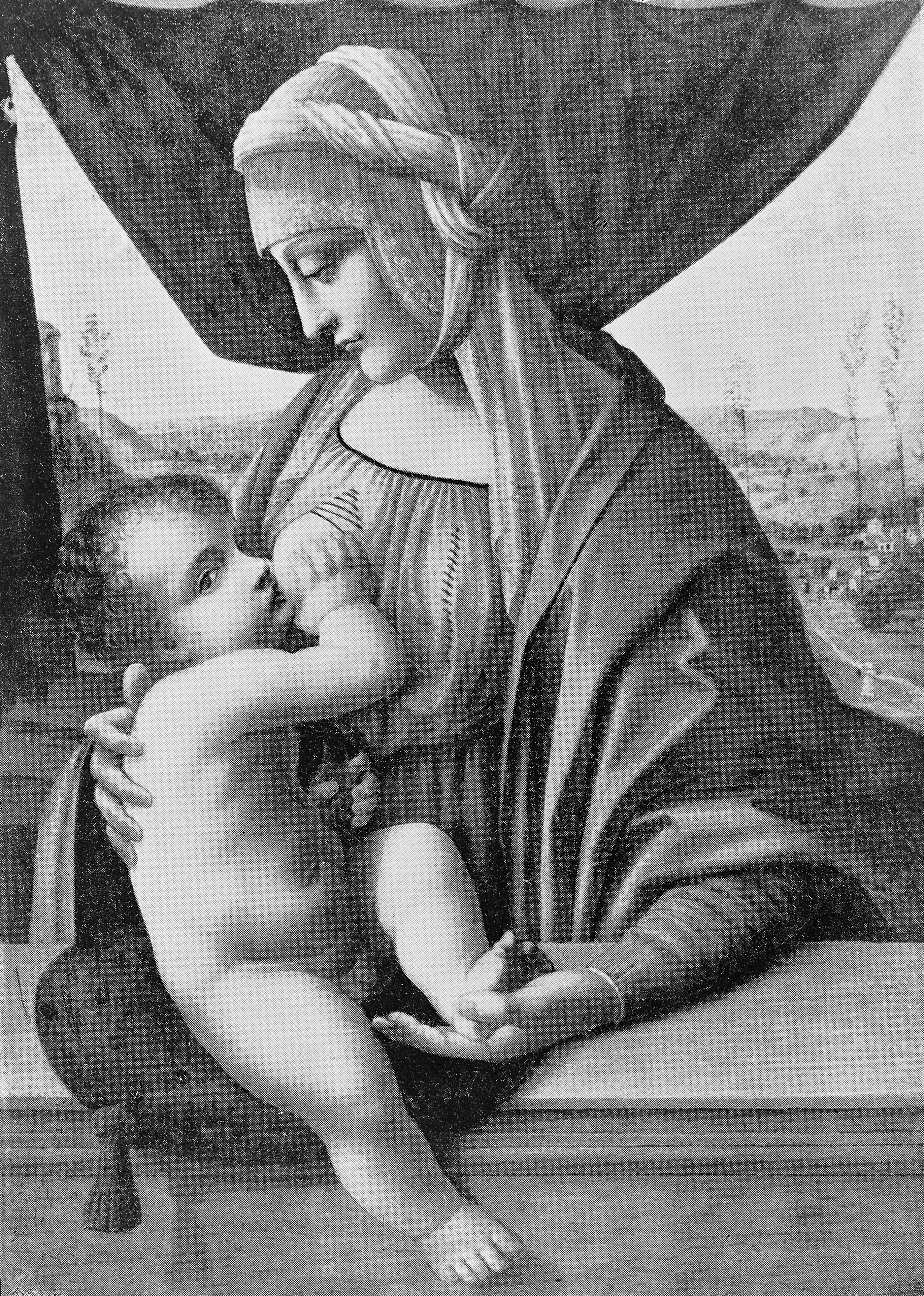
Wellcome Collection image: Madonna and child showing breast feeding. Milan. Musee Poldi-Pezzolige
In 1982 Chloe Fisher, who has dedicated much of her life to educating midwives and women on infant feeding and to supporting breast feeding mothers, published a historical review of modern breastfeeding ‘management’ and the origins of certain restrictive practices which prevailed for a considerable time during the twentieth century. While contemporary medical experts were advocating limiting the duration of initial breast feeds and no night feeds, at the end of this paper Chloe highlights the words of those who challenged such notions but whose work had hitherto been largely unrecognised. The following is a quotation from the concluding paragraphs of her paper:
‘Early in this decade [the 1950s] two well designed research projects (Illingworth and Stone, 1952: Newton, 1952) came to the conclusion that removing the restrictions would aid the establishment of lactation and reduce the incidence of problems. Other work led the author of a comprehensive history of infant feeding to say, of self-demand feeding,“When this regime becomes universally adopted, as surely it will, so the last chapter on the history of infant feeding will be concluded” (Wickes, 1953). That was in 1953!
In the developed world, slavish adherence to the earlier theories probably did as much harm to human lactation as the promotion of artificial feeds. But that we should have been guilty of taking these ideas to the developing countries, where artificial feeding can cause gross malnutrition, if not death, should make us pause for serious thought. How did it take another 20 years for the hoped-for improvements to begin to occur here? There is no simple answer, but a large contribution to the delay must have come from the rapid increase in hospital confinements, as it was in hospitals that these practices were firmly established. The rapid and happy changes that are now taking place owe much to the insistence of the many mothers who wish to breastfeed their babies. For the few professionals who are deeply concerned to increase breastfeeding, both for the sake of the mothers and their babies, exciting and rewarding times lie ahead.’
The UNICEF Baby Friendly Initiative World Breast Feeding Week (August 1st–7th 2018) ended recently. In the UK, the week was preceded by a sensational Channel 4 film in the Dispatches series, ‘Breast feeding uncovered’, which explored the experience of breast feeding mothers today through the eyes of a breast feeding investigative journalist. It would appear that, while many women are now motivated to breast feed, society’s attitude towards feeding in public and the recognition of its benefits to babies and families and ultimately to society, could be better.
J C Allotey 09/08/18
References
Fisher, C. (1982). Mythology in midwifery – or “making breastfeeding scientific and exact”. Oxford Medical School Gazette, Trinity Term, 30-33.
Illingworth, R.S., and D.G.H. Stone (1952). Self demand feeding in a maternity unit. Lancet, 1, 683.
Newton, N. (1952). Nipple pain and nipple damage. Journal of Pediatrics, 41, 411
Wickes, I.G. (1953). A history of infant feeding. Archives of Disease in Childhood, 128, 151
Only 10 places left for in Sickness and in Health – the BSHM event in September…
Two new book reviews
Catherine M Morrison (2017)
Hebridean heroines: twentieth-century Queen’s Nurses (1940s-1970s)
(reviewed by Dr Alison Nuttall), and
Jennifer Evans and Sara Read (2017)
Maladies and medicine: exploring health and healing 1540-1740
(reviewed by Carole McGlone).
New image gallery for the De Partu website: launch of an appeal for images of midwives’ badges
Wouldn’t it be timely to compile a gallery of as many former midwifery ‘training’ school badges as possible, before they are lost? Former schools of midwifery often produced their own badges, sometimes with interesting coats of arms or mottos on them. We have made a start with this: members can view them in our image library. Has this tradition of awarding badges been continued by contemporary higher education institutions? …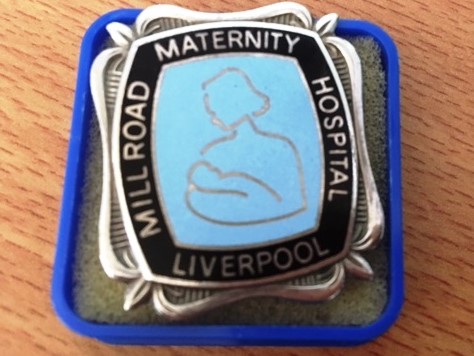
Victorian values: an image of the Virgin Mary bottle feeding!
York Minster Nave: Nativity boss (1840)

The Nativity Boss
York Minster was built between 1220 and 1472 and is one of the great Gothic cathedrals of England and Europe. In the course of the last two centuries, it has suffered three catastrophic fires with the second, in 1840, destroying the roof of the nave.
The nave roof is decorated with a series of eight bosses that depict the life of the Virgin Mary, a figure of great devotion in Catholic Christendom during the medieval period. The second of the bosses depicts the nativity, the birth of Christ in a stable in Bethlehem. The original boss showed a magnificent ox and ass, a shepherd, angels, the manger and, at the centre, the seated figure of the Virgin with her eyes raised to heaven, breastfeeding the infant Jesus.
In 1834, a local artist, John Browne, made detailed sketches of the nave bosses during maintenance work in the Minster. These sketches were the primary source for the huge restoration that took place following the 1840 fire. All the bosses were restored exactly as Browne had depicted them, except for the nativity boss. Apparently, in response to Victorian preferences for extreme modesty in social settings and church adornments, the restored boss depicted the Virgin bottle-feeding her baby, rather than breastfeeding!
Kindly contributed by Professor Mary Nolan, who is also an official York Minster guide.
Midwifery records of Midwife Booth of Salford
Midwife Booth, a Salford midwife, attended over 4,225 cases (1864-1879). Ellen Booth practised in the environs of Salford during the nineteenth century. Data provided in this register suggests that she attended over 4,225 births between 1864 and July 1879. From the figures listed in the front of the book, her birth attendances were lowest in the first few years of practice, which happened to coincide with the latter years of the Lancashire Cotton Famine (1861-65). The surviving casebook lists births from 1873 until July 1879, and shows a year-on-year increase in midwifery activity.
The format of the individual birth records evolved slightly over time, but contained details of the mother’s name and address, the day and month of the year, and the sex of the child (or children), and it was noted if it was the mother’s first baby. The numbers of births for each completed year were totalled, and interestingly, at the back of the book, she also kept notes of some of the fees charged and any amounts that remained outstanding. Although there is a slight inconsistency in the style of the records towards the end, births were predominantly described as ‘natural’, and there are relatively few cases in which medical attendance was summoned.
The medical cases begin to appear towards the end of the register; in one case a Dr Winterbottom was called to perform an ‘instrumental’ birth, two more cases are described as ‘natural instrumental’, and in 1879 there was an instrumental birth of a stillborn infant boy. A significant number of infants were born ‘face to pubis’ and Mrs Booth encountered several breech births (one footling), plus face presentations and sets of twins, which were all born without apparent difficulty . Complications noted included several retained placentae, an ‘emerage’ (haemorrhage) before birth, which resulted in a natural birth, and one ‘emerage’ after birth, with no mention of her calling for medical assistance. There were also references made to miscarriages as well as stillbirths.
Several babies were described as malformed, and prematurity was noted; one premature baby was recorded as living for 20 hours (incidentally, none of the babies appear to have been weighed at this time). Towards the end of the register, a maternal death is documented which occurred at the onset of labour, apparently due to ‘rupture of the heart’.
These archives are from the Craig Brisbane Collection, and were brought to the attention of De Partu via Manchester Museum. Group member Dr Frances Badger has already completed a study of a similar birth register which contains details of over 5000 births between 1847 and 1875, kept by a midwife called Mary Eaves of Spon End, Coventry. The archives have now been transferred to her for a closer examination and investigation.
Dr Frances Badger -thesis abstract
Frances’s article on Mary Eaves may be of interest:
Badger, Frances J. Illuminating nineteenth-century English urban midwifery: the register of a Coventry midwife. Women’s History Review 23(2014) 683-705
De Partu event at York 26th-27th May 2017 – call for papers
Willughby on midwives…
‘I desire that all midwives may gain a good repute, and have a happy successe in all their undertakings: and that their knowledge, charity, and patience, with tender compassion, may manifest their worths among their women, and give their women just cause to love, honour, and to esteem them.’
Percivall Willughby (1596-1685)
Willughby, P., & Blenkinsop, H. (1863). Observations in Midwifery, as also the Country Midwifes Opusculum or Vade Mecum … Edited from the original MS. by Henry Blenkinsop. Warwick: H. T. Cooke & Son, p. 12 (full text available online)
Jean Donnison (1925-2017)
It is with deep sadness that we announce the death of Dr Jean Donnison on January 27th, after a long period of declining health during which she bravely continued to work and publish. Jean will be known to many members for the significant contributions that she made to midwifery history, in particular her classic work Midwives and medical men: a history of the struggle for the control of childbirth, first published in 1977, which is still highly cited. Jean wrote a small feature for De Partu, The office of midwife – some historical background.
Readers are invited to add their own tributes to Jean via the comments function. They are also invited to make a donation in her memory to Maternity Worldwide via JustGiving. Maternity Worldwide is a charity saving lives in childbirth by training midwives, providing community maternal health promotion and improving access to health.
 |
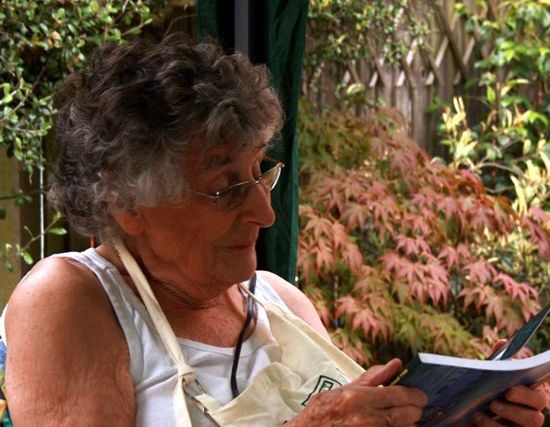 |
Ethelred the Unready’s gift to parturient women: an agate touch-stone said to ease childbirth
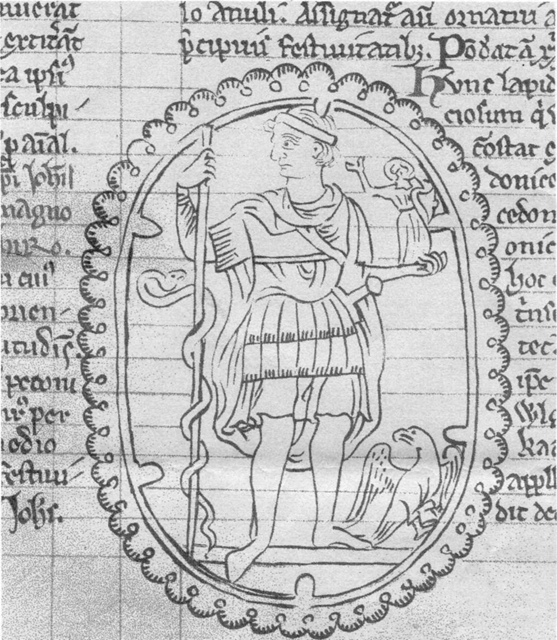
From British Library, Manuscript Cotton Nero D i, f.l46v Enlarged so as to represent probable dimensions of original stone.
Read here the full version of Professor Michael Swanton’s article:
Ethelred the Unready’s gift to parturient women: an agate touch-stone said to ease childbirth
Professor Swanton is Emeritus Professor of Medieval Studies at the University of Exeter.

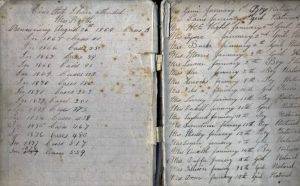
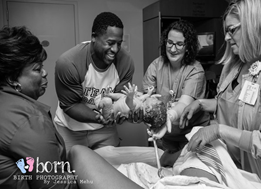 De Partu history of childbirth event
De Partu history of childbirth event